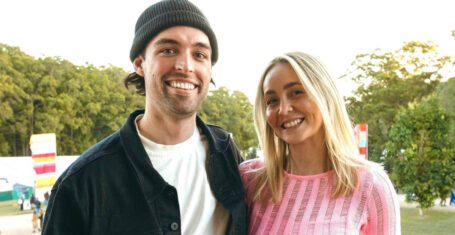
Cambridge RAG ft. Mount Kilimanjaro
On September 3rd 2015, I boarded a 12 hour flight to Tanzania to take on the challenge of climbing Mount Kilimanjaro.
Information evenings for this year’s Challenge are on 27th & 29th of October in the Bateman room in Caius
Along with 23 other Cambridge and Surrey University students, I was about to take on Africa’s highest mountain.
Scrap that. I was taking on the world’s highest free-standing mountain, a peak that stands at 5,895m above sea level, higher than Everest Base Camp itself.
Caj
Was I mad? Quite probably.
Was I excited? Absolutely.
One thing I know for sure is that I was terrified of failing.
Just two months before embarking on my African adventure, I had undertaken the National Three Peaks Challenge in the UK as a warm-up climb and, although I had completed it, I’d sustained an excruciating tear of my hip flexor that left me unable to train on the leg properly for weeks.
I was terrified about the prospect of an injury on Kilimanjaro, of letting down all of the people who had sponsored me to take on my charity challenge.
My aim was to raise funds for the Hope for Children charity. In all, I was able to raise over £3,300 for the charity due to the generosity of my family and friends (and a lot of Facebook spam… and bucket collections dressed up as a tiger on the streets…)
What didn’t happen
The day immediately before our Kilimanjaro climb, our group was lucky enough to visit one of Hope for Children’s projects in Tanzania, the Amani Children’s Home. Having the chance to see first-hand the impact our money was having on the lives of some of the 400,000 deprived street children in Tanzania proved an incredible motivator for our whole team and an exceptionally humbling experience.
Hanging out
But that wasn’t going to stop me getting injured.
And, even if my leg did hold out after the strength training I had been doing at the gym, I was aware that, on Mount Kilmanjaro, I was bound to be affected by altitude sickness.
You hear the horror stories – hallucinations, nausea, even death. It’s well-known that whether or not you suffer from altitude sickness is effectively pot luck; some of the world’s fittest athletes like Martina Navratilova have been the worst affected.
Things were definitely looking challenging.
But what followed was the most amazing adventure of a lifetime.
First-off, I can honestly say that the mountain provided some of the most jaw-dropping scenery I think I’m ever likely to witness.
Cotton wool cloudline
Over our 4 1/2 day ascent and 1 1/2 day descent, we walked for about 9 hours a day through four different ecological zones: cloud forest, moorlands, alpine desert and summit, and camped at night under starry skies. Our concept of where the ground started was lost and the cotton wool cloud line at 3,000m became our new floor for the four days in the middle of the trip.
For me, more than anything, it was the sheer thrill of taking on an outdoorsy physical challenge in the fresh air, away from the confines of a library or an office, or even from the local gym, that I enjoyed most about the challenge.
Kilimanjaro is more of a trek than it is a technical climb but I still couldn’t help but feel like Lara Croft as we scrambled with our hands and trekking poles to climb over the steep Barranco Wall on Day 4, a near-vertical section of rock over which… let’s face it… Health and Safety would never send a popular tourist route in the UK.
Things were different there
The feeling of achievement as we entered our campsite each evening after completing the day’s hours of trekking was incredibly satisfying.
And, unsurprisingly, the hours of trekking also made the platters of pasta and rice in the mess tent each evening that much more satisfying too.
So, it doesn’t sound like it was too tricky, right? Beautiful views, lovely people, platters of food.
Wrong.
Out of our group of 24, four members of our ‘A1 Team’ sadly didn’t make it to the peak due to severe altitude sickness, experiencing symptoms of nausea, vomiting and hallucinations. One member of our group even began to think that the rocks on the mountain were pieces of popcorn… (You’re allowed to laugh. He’s fine now.)
And summit night… well that was hard. REALLY hard.
Throughout the trip, I had been taking one of the anti-altitude-sickness medications (Diamox) and, apart from a sensation of having ‘a beard of bees’, I seemed not to have been affected by any sort of altitude sickness or any side-effects of medication, a scenario for which I consider myself exceedingly lucky to this day.
But even without altitude sickness, I honestly know I have never felt more physically exhausted than I did on that summit night attempt. The fatigue was at its worst eight hours into our summit attempt, closing in on Stella Point, the last stopping point before Uhuru Peak itself.
The symptoms of extreme tiredness, dehydration and lactic acid build-up from oxygen deprivation were overwhelmingly apparent as we scaled the steep scree slopes at temperatures below freezing, in pitch black, after only one hour of sleep.
Ploughing onwards
And, through steely determination and supported by our incredible team of Tanzanian guides and porters, twenty of our group managed to push through to Stella Point to take on the final 200m push.
We were closing in on the Roof of Africa.
We plodded like zombies, an extreme parody of the ‘pole pole’ (slowly slowly) Swahili instruction that had been shouted at us throughout the trip to encourage us to maintain a steady pace, allowing us to acclimatize to altitude.
Finally, with a sunrise that looked like it had been lifted straight out of the opening scene of The Lion King, and after nine and a half hour hours of climbing on far too little water (and, it goes without saying, too little oxygen), we made it to Uhuru Peak.
On the Roof of Africa
WE HAD CONQUERED KILIMANJARO.
WE HAD SCALED THE WORLD’S HIGHEST FREE-STANDING MOUNTAIN.
I honestly can’t tell you the sense of relief we felt at the moment when we reached the peak. And, as if overtaken by adrenalin, our relief quickly turned to excitement and an overwhelming sense of pride and achievement.
Twenty of us had climbed Kilmanjaro including, I should add, the entire Cambridge contingent. (Better than Surrey… just saying…)
Take on the Kilimanjaro challenge.
And take it on for charity.
My adventure to the Roof of Africa is undoubtedly an experience that I will remember for the rest of my life. Despite not knowing any of the team beforehand, I have made friends for life in the ‘A1 Team’ I climbed with.
And perhaps as importantly, I now have an ample supply of epic Facebook cover photos and need never be stumped by your bog-standard ‘Describe a challenging situation that you have faced’ interview question ever again.
In the baaaaag
Asante, Kilimanjaro. You’ve been epic.









































